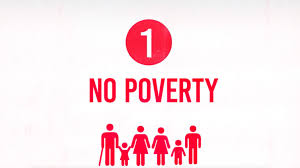The Significance of Sustainable Development Goal 1: No Poverty
Sustainable Development Goal 1 (SDG 1) focuses on ending poverty in all its forms everywhere. It is a crucial goal that aims to ensure economic prosperity for all while promoting social inclusion and environmental sustainability.
According to the United Nations, approximately 10% of the world’s population lives in extreme poverty, surviving on less than $1.90 a day. SDG 1 targets to eradicate extreme poverty by implementing sustainable and inclusive policies that address the root causes of poverty and inequality.
Key Objectives of SDG 1:
- Eradicate Extreme Poverty: SDG 1 aims to lift people out of extreme poverty by providing access to basic resources such as food, clean water, healthcare, education, and employment opportunities.
- Promote Social Protection: The goal emphasizes the importance of social protection systems that safeguard vulnerable populations from economic shocks and ensure their well-being.
- Create Sustainable Livelihoods: By promoting sustainable economic growth and decent work for all, SDG 1 seeks to empower individuals and communities to break the cycle of poverty.
- Address Inequalities: The goal recognizes that poverty is often intertwined with social inequalities based on factors such as gender, age, disability, ethnicity, or location. Addressing these disparities is essential for achieving sustainable development.
The Role of Individuals and Organizations:
Achieving SDG 1 requires collective action from governments, businesses, civil society organizations, and individuals. By advocating for fair wages, supporting local businesses, volunteering at community organizations, and promoting ethical consumption practices, everyone can contribute to reducing poverty levels in their communities.
Furthermore, companies can play a significant role by implementing sustainable business practices that prioritize fair labor conditions, environmental stewardship, and social responsibility. By investing in job creation initiatives and supporting micro-enterprises in underserved areas, businesses can help uplift marginalized populations out of poverty.
In Conclusion:
Sustainable Development Goal 1 serves as a reminder of the urgent need to address global poverty challenges through collaborative efforts and innovative solutions. By working together towards a more equitable and sustainable future, we can create a world where no one is left behind due to economic hardship.
Frequently Asked Questions About SDG 1: Understanding and Achieving No Poverty
- What can we do to achieve SDG 1?
- What is the main goal of SDG 1?
- What is Sustainable Development 1?
- Has SDG 1 been achieved?
What can we do to achieve SDG 1?
To achieve Sustainable Development Goal 1, which focuses on ending poverty in all its forms, individuals, communities, governments, and organizations must collaborate on comprehensive strategies. Key actions include promoting inclusive economic growth, investing in education and healthcare, ensuring social protection for vulnerable populations, creating sustainable job opportunities, addressing inequalities, supporting small businesses and entrepreneurs, advocating for fair wages and labor rights, and fostering responsible consumption and production practices. By prioritizing poverty alleviation efforts at both local and global levels and integrating SDG 1 principles into policies and practices across sectors, we can work towards a more equitable and prosperous future for all.
What is the main goal of SDG 1?
The main goal of Sustainable Development Goal 1 (SDG 1) is to eradicate poverty in all its forms worldwide. SDG 1 aims to ensure that everyone, regardless of their background or circumstances, has access to basic necessities such as food, shelter, healthcare, education, and employment opportunities. By addressing the root causes of poverty and promoting sustainable economic growth, SDG 1 seeks to create a more inclusive and equitable society where no individual is left behind due to economic hardship. This goal highlights the importance of social protection systems, equal opportunities for all, and efforts to reduce inequalities in order to achieve a world free from extreme poverty.
What is Sustainable Development 1?
Sustainable Development Goal 1, also known as SDG 1, is a crucial objective set by the United Nations as part of the 2030 Agenda for Sustainable Development. It aims to eradicate poverty in all its forms and dimensions, ensuring that everyone has access to basic necessities such as food, shelter, healthcare, education, and employment opportunities. SDG 1 emphasizes the need to address the root causes of poverty while promoting social protection systems and sustainable livelihoods for vulnerable populations. By focusing on economic empowerment, social inclusion, and environmental sustainability, Sustainable Development Goal 1 seeks to create a more equitable and prosperous world for all.
Has SDG 1 been achieved?
The achievement of Sustainable Development Goal 1 (SDG 1), which aims to end poverty in all its forms everywhere, is a complex and ongoing process. While significant progress has been made in reducing global poverty rates over the years, the goal of eradicating extreme poverty by 2030 remains a formidable challenge. Various factors such as economic disparities, social inequalities, environmental degradation, and recent global crises have posed obstacles to achieving SDG 1. Continuous efforts from governments, organizations, and individuals worldwide are essential to accelerate progress towards ending poverty and ensuring sustainable development for all. Monitoring indicators, implementing effective policies, and fostering international cooperation are crucial steps towards realizing the vision of a world free from poverty.

